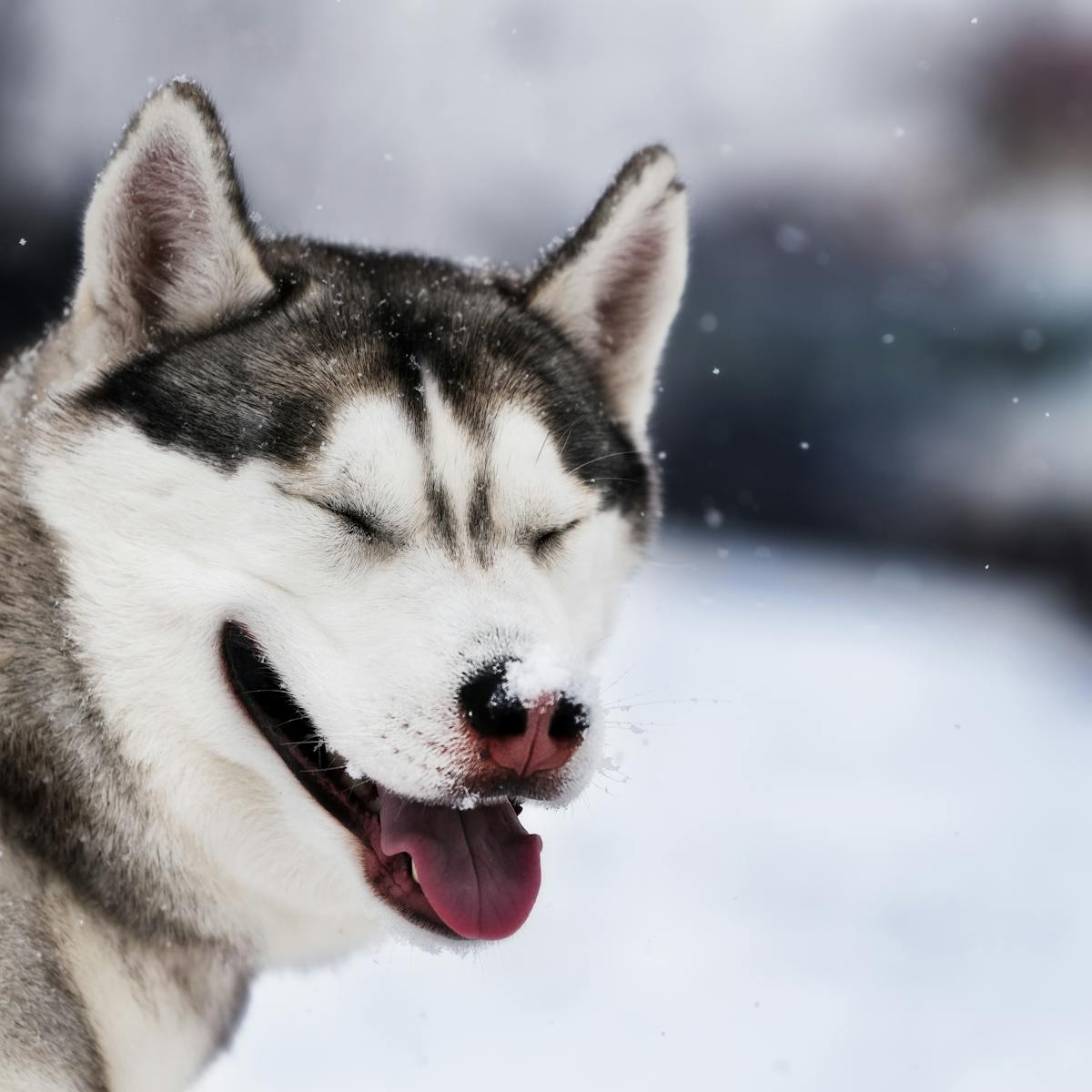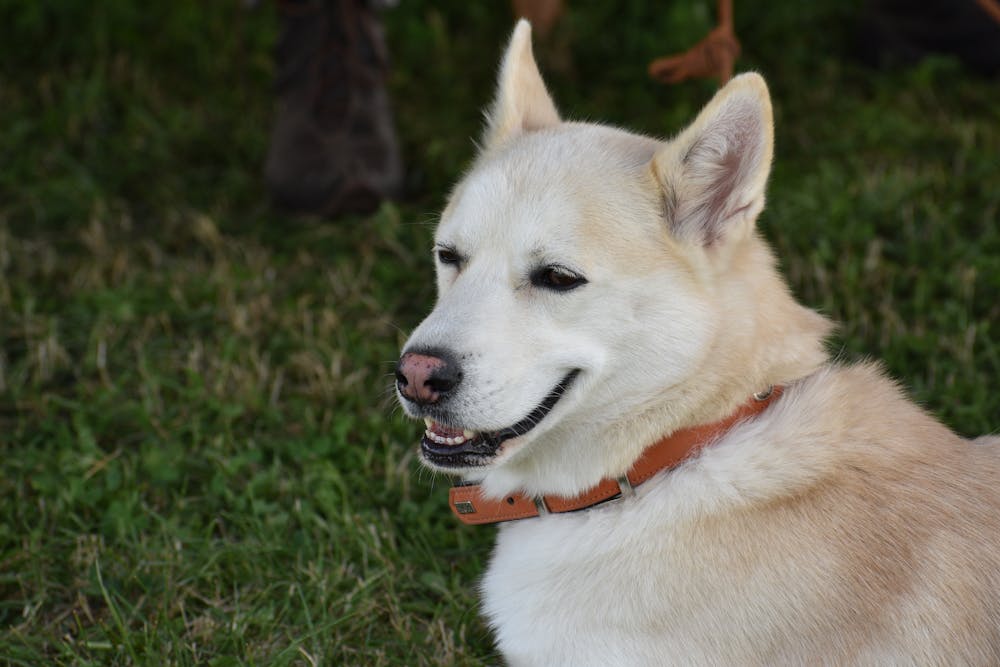
All healthy dogs should have moist cool noses. All healthy dogs should have moist cool noses.

This often happens in the winter and you may be wondering why.
Snow nose in dogs. If your dogs nose turns from its usual dark color to pink or brown specifically during the winter your dog may have what is commonly referred to as dog snow nose or winter nose The condition which is called hypopigmentation typically causes a dogs nose to lighten in colornormally to a pink or light brown. What Is Snow Nose. Snow nose is a common term for a dog nose thats loses pigment and turns from blackbrown to pink.
Typically this either appears as spots or as a stripe down the center of the nose says Life In the Dog Lane. Dogs are more likely to. The only known symptom of snow nose in dogs is the fading or lightening of the nose color.
This color change can be permanent but is most often a temporary change so the nose usually returns to its normal color. Some dogs even develop snow nose repeatedly each year or season but only the color of the nose changes and not the texture. Snow nose is a skin condition in dogs that happens in the wintertime but not always.
It causes a dogs nose to temporarily change color or lose pigment. The color your dogs nose turns depends on their usual color so its always a good idea to pay attention to their snoots year-round. If your dogs nose turns from its usual dark color to pink or brown specifically during the winter your dog may have what is commonly referred to as dog snow nose or winter nose The condition which is called hypopigmentation typically causes a dogs nose to lighten in colornormally to a pink or light brown.
Snow nose or winter nose is a temporary usually loss of pigment in the nose of a dog. The decrease in pigmentation of the nose changes the colour of the nose from black to pink. It often starts with either small pink spots appearing across the nose or a thin pink strip becoming visible in the middle of the nose.
Snow nose affects white dogs and lighter colored dogs most often but other dogs may also lose nose pigment. It occurs most often during winter months causing some people to theorize that the condition is related to sunlight. What Is Dog Snow Nose.
Snow nose affects white dogs and lighter colored dogs most often but other dogs may also lose nose pigment. It occurs most often during winter months causing some people to theorize that the condition is related to sunlight. Because snow nose often occurs in winter time it is sometimes called winter nose.
My dog Kota who is a husky mix doesnt have a black nose but the pink hues in it become more prominent during the winter months. Her nose is my favorite feature to photograph the details of. When I can catch little droplets of snow coating her whiskers ever better.
Here are a few detailed captures of Kotas snow nose. Im afraid that snow nose is a permanent natural pigment change. It simply happens to be the normal healthy color of your dogs nose.
Unfortunately if your breed standard does not allow for a snow nose any method for covering it up during a show is a violation of the rules. Snow nose or winter nose is when a dogs nose temporarily turns pink during the winter months. Snow nose is a common condition occurring during the shorter and colder months when the dark pigment of the nose fades to a pinkish color.
Often its just the center of the nose giving him a pink stripe. Why Do Dogs Get Snow Nose. It is unclear why dogs get snow nose.
Snow nose influence white dogs and lighter hued dogs most frequently but extra dogs may also mislay nose pigment. It happens most often in the winter months affecting some people to speculate that the state is connected to sunlight. This is because snow nose frequently occurs in winter hour it is most of the time called winter nose.
Snow nose is a phenomenon that can affect dogs whose noses are naturally dark and pigmented like dogs with black and brown noses. Some dogs naturally have pink or pale noses and it is only when a dog who has a darker nose begins to display lightening of the nose which can occur either across the whole nose or just in patches that we call it snow nose. Dudley winter or snow nose is a condition where a dogs nose changes colour or loses pigment usually from black or brown to pink and typically in the winter.
In this blog we are discussing snow or winter nose the condition where a dogs nose changes colour or loses pigment. This often happens in the winter and you may be wondering why. Snow nose occurs mainly in light-coated breeds.
The colour change can become permanent in older dogs. It is not associated with disease. Another reason for this condition is a deficiency of B vitamins PABA in particular.
Get rid of plastic food bowls and replace them with metal or ceramic bowls since some pets may be allergic to plastic. In some dogs particularly breeds like the husky and some retrievers their noses will lose some pigment in the winter. All healthy dogs should have moist cool noses.
With snow nose dark pigment on a dogs nose will fade during the winter when days are shorter and weather is cooler. Snow nose is a common condition that causes the nose or parts of it to lighten to a pale pink color. Snow nose another common form of nasal depigmentation is a seasonal loss of pigment in the nose.
In affected dogs the nose pales in the winter and darkens in the summer. It is important to note that dogs with snow nose do not. Pigmentation issues that concern owners are generally concerned with.
Lack of colour on the nose. Lips or eye where it is especially noticeable and this often occurs during the winter months and can be referred to as winter nose. Or could be a genetic issue.
Experience shows that iron and iodine are the specific minerals needed to help. Interestingly snow nose is more prevalent in pets with lighter fur such as white coats. Of course it affects all types of breeds regardless of color and the symptoms are very similar.
An afflicted canine will display a very bright pink or brown snout. If your dog already has a pink nose normally a stripe will become noticeable. Should you be concerned about dog snow nose.
What causes dog snow nose. Could it be something other than snow nose. What should you dot prevent snow nose.
Which dogs are affected. Snow nose and dogs About Press Copyright Contact us Creators Advertise Developers Terms Privacy Policy Safety How YouTube works Test new features 2021 Google LLC.